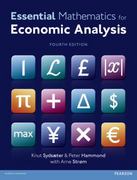Question
Clifford Clark is a recent retiree who is interested in investing some of her savings in corporate bonds. Her financial planner has suggested the following
Clifford Clark is a recent retiree who is interested in investing some of her savings in corporate bonds. Her financial planner has suggested the following bond: Bond A has 7% coupon rate, paid semi-annually, mature in 12 years, and has a $1000 face value. The bond has a yield to maturity of 9%
- Without calculating the price of the bond, indicate whether the bond is trading at a premium, at a discount, or at par. Explain your reason. In other words, use concepts to justify your conclusion, without actually calculating the bond price here.
- Calculate the price of the bond.
- If one year after Fiona purchased the bond, the yield of maturity drops to 6%, what will be the price of the bond at this time point, right BEFORE its 3rd coupon payment? What will be the price of the bond at this time point, immediately AFTER its 3rd coupon payment?
- When the financial advisor recommended Bond A to Fiona, she was also considering three other bonds besides Bond A:
Bond B has 7% coupon rate, paid semi-annually, mature in 9 years, and has a $1000 face value.
Bond C has 9% coupon rate, paid semi-annually, mature in 9 years, and has a $1000 face value.
Bond D has 5% coupon rate, paid semi-annually, mature in 12 years, and has a $1000 face value.
Which of these four bond has the highest interest rate risk? Explain
Step by Step Solution
There are 3 Steps involved in it
Step: 1

Get Instant Access to Expert-Tailored Solutions
See step-by-step solutions with expert insights and AI powered tools for academic success
Step: 2

Step: 3

Ace Your Homework with AI
Get the answers you need in no time with our AI-driven, step-by-step assistance
Get Started


